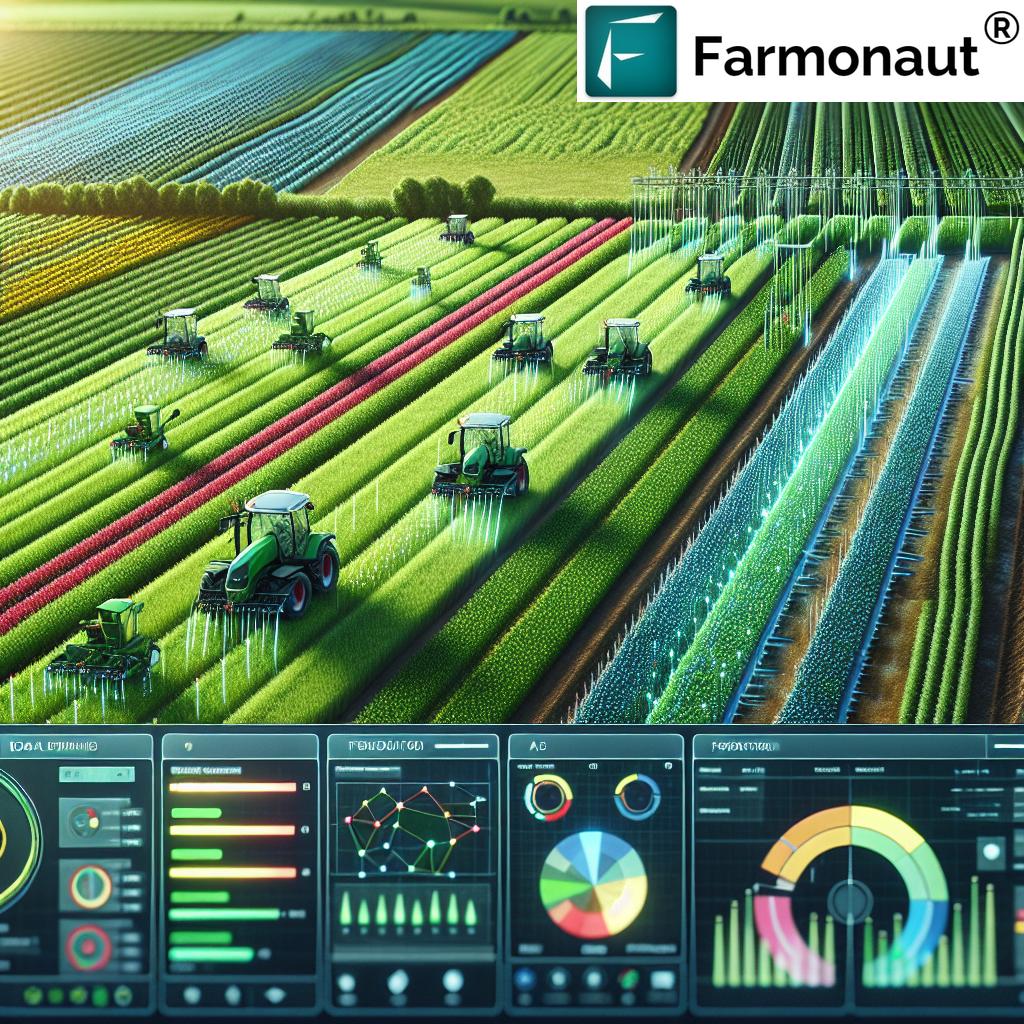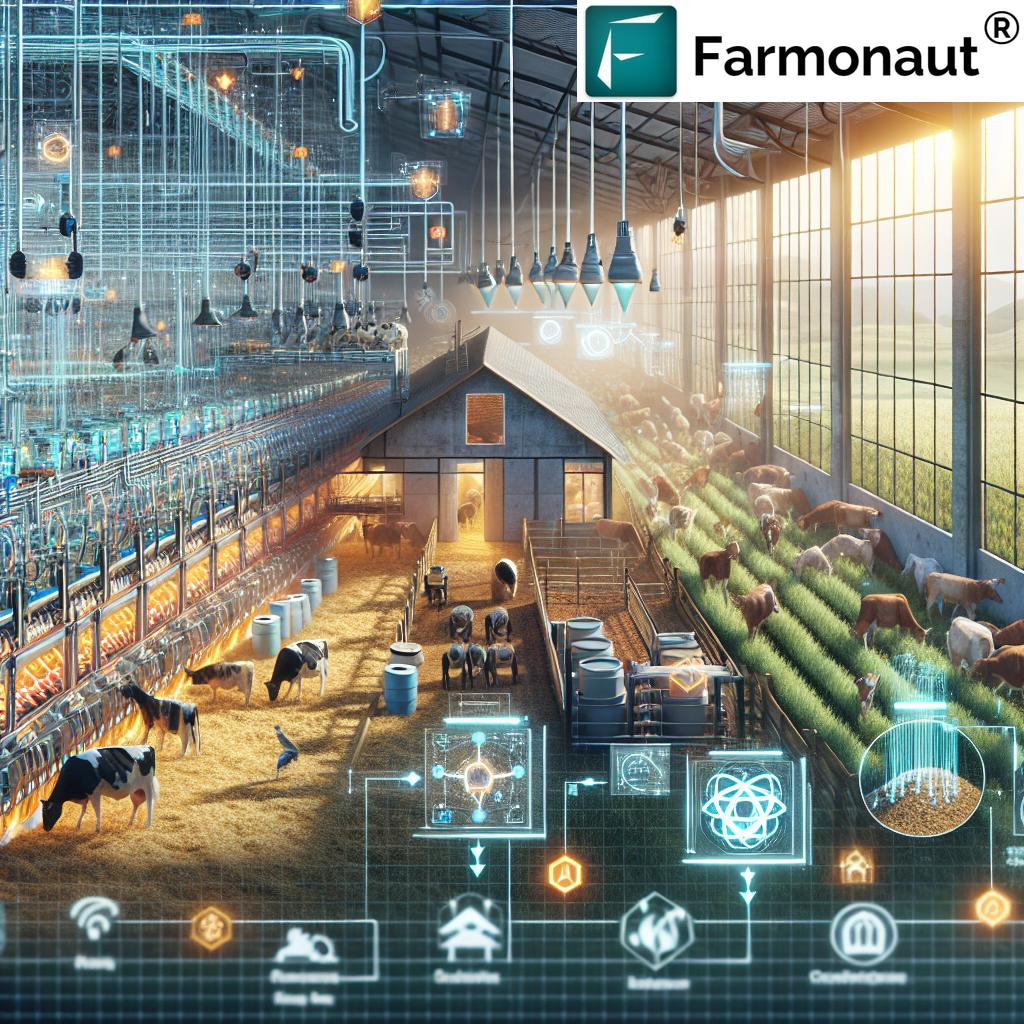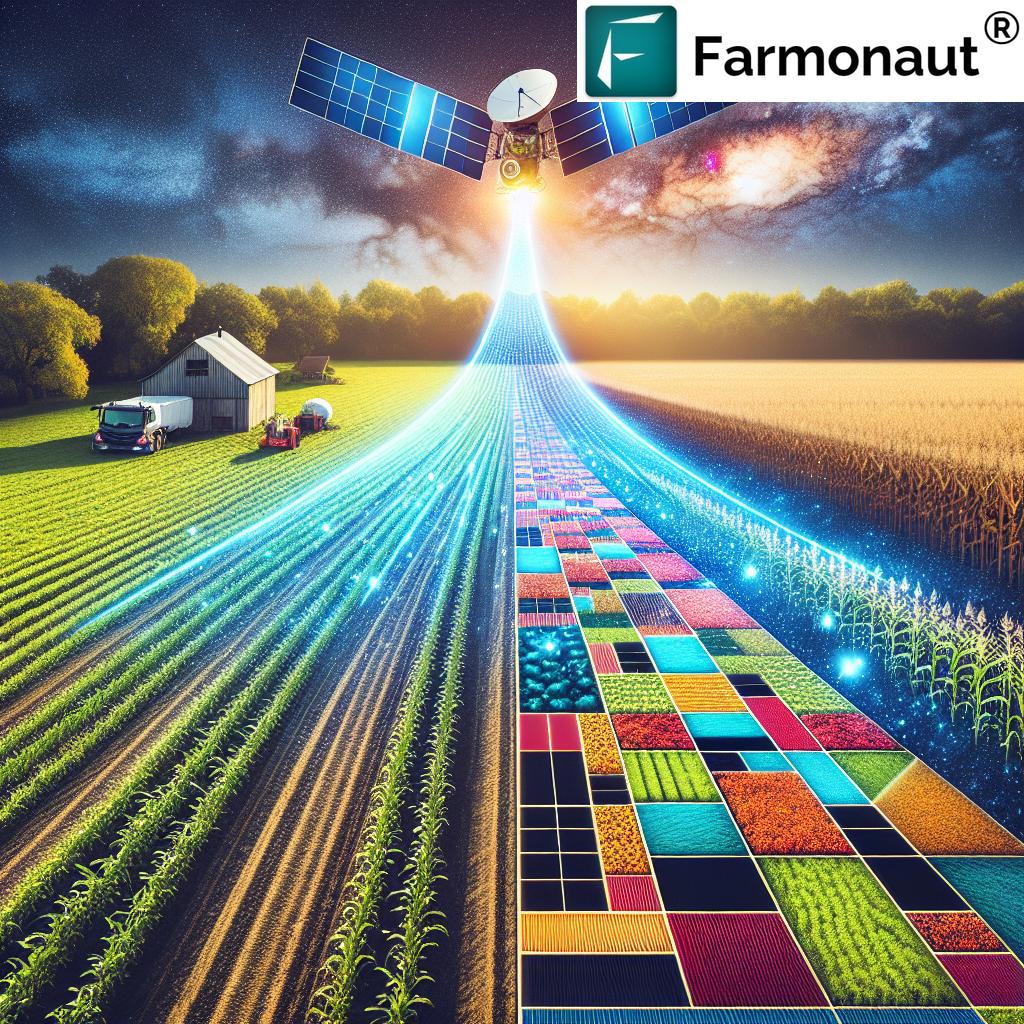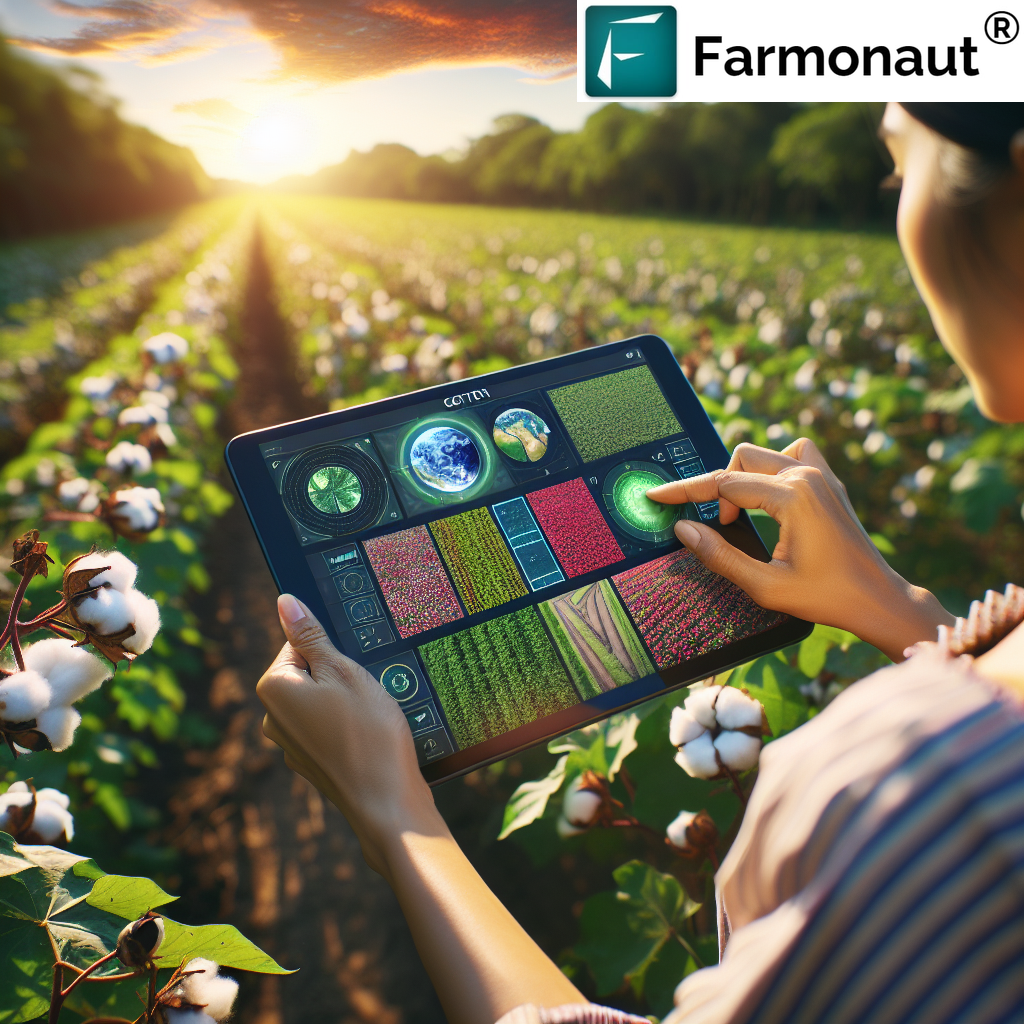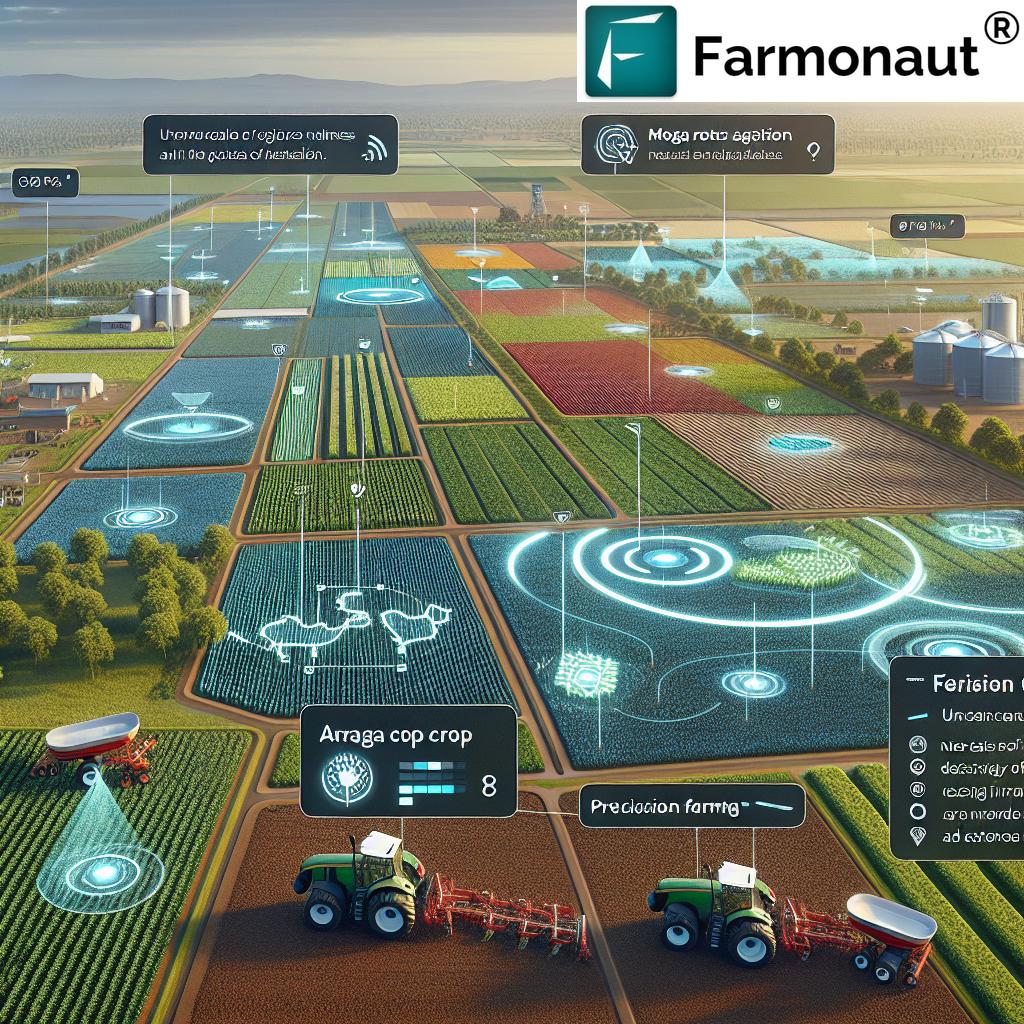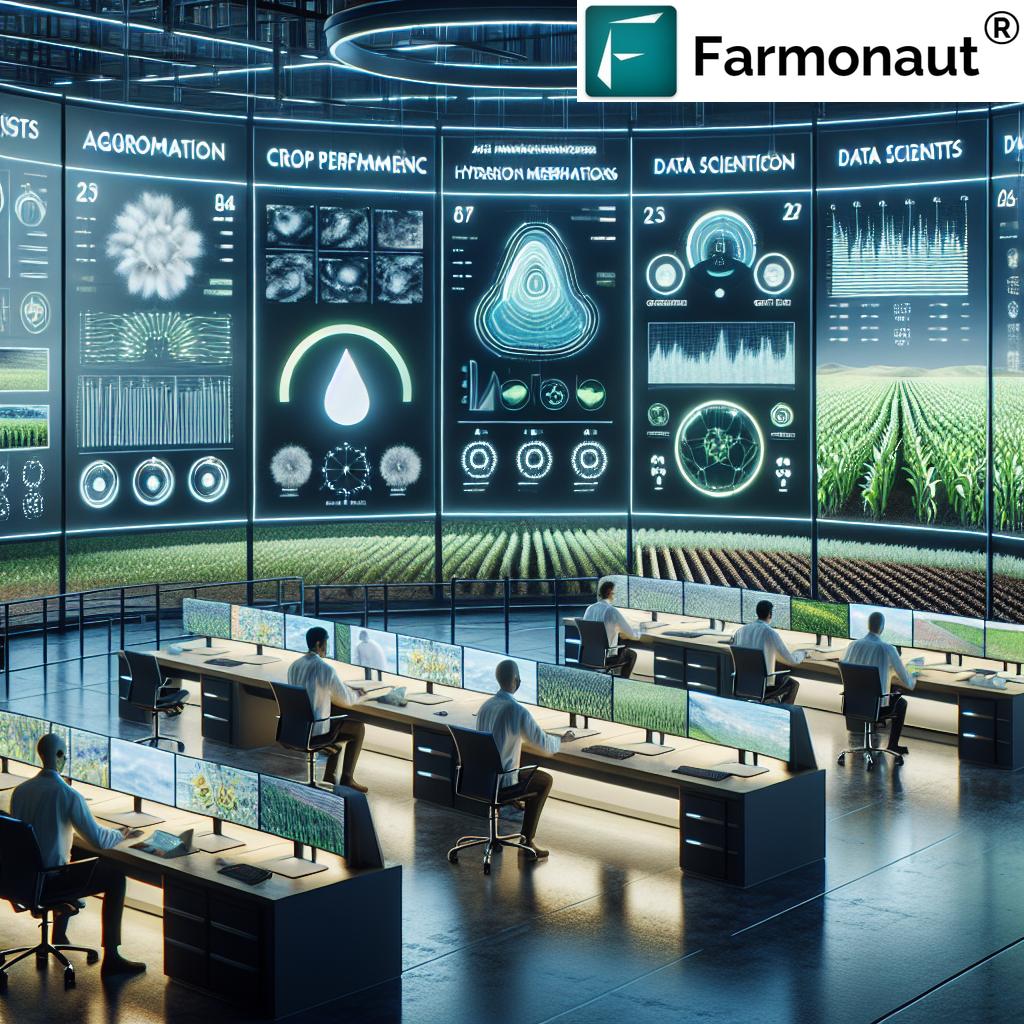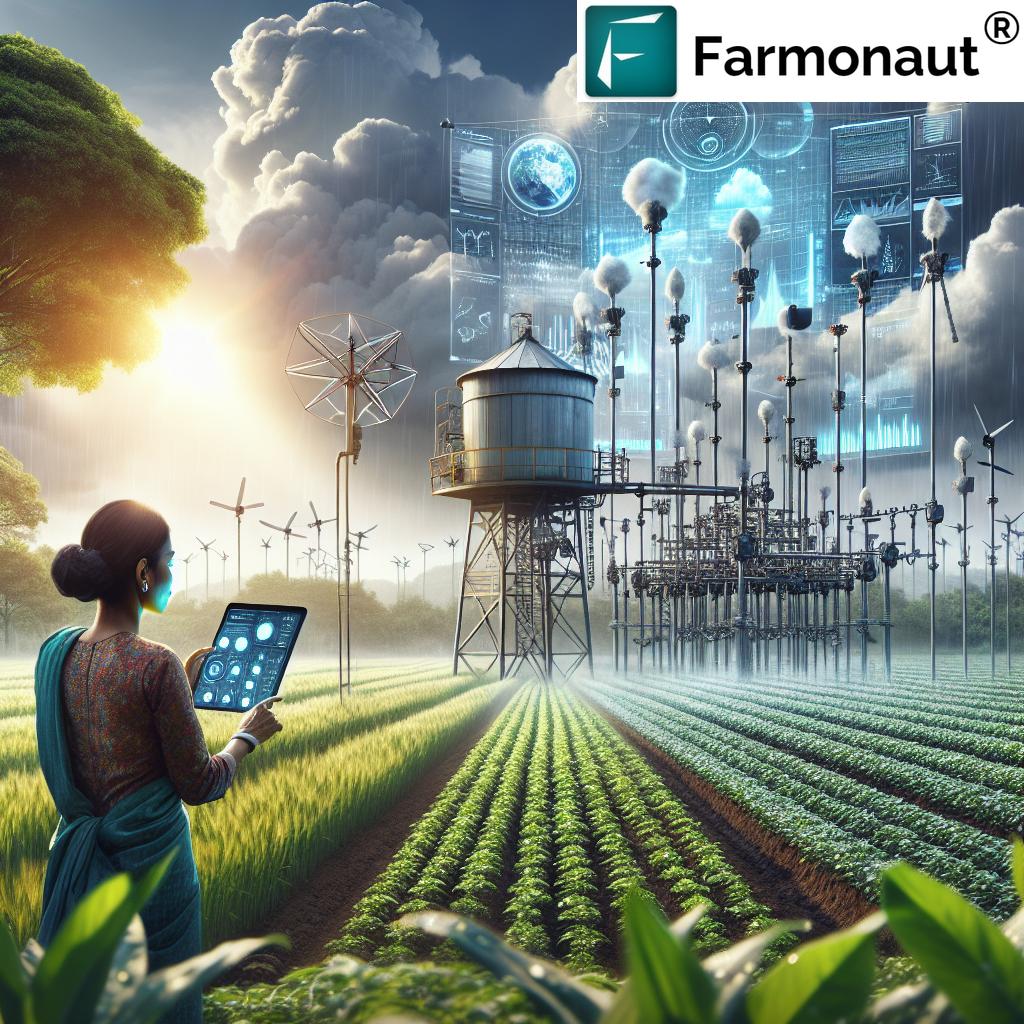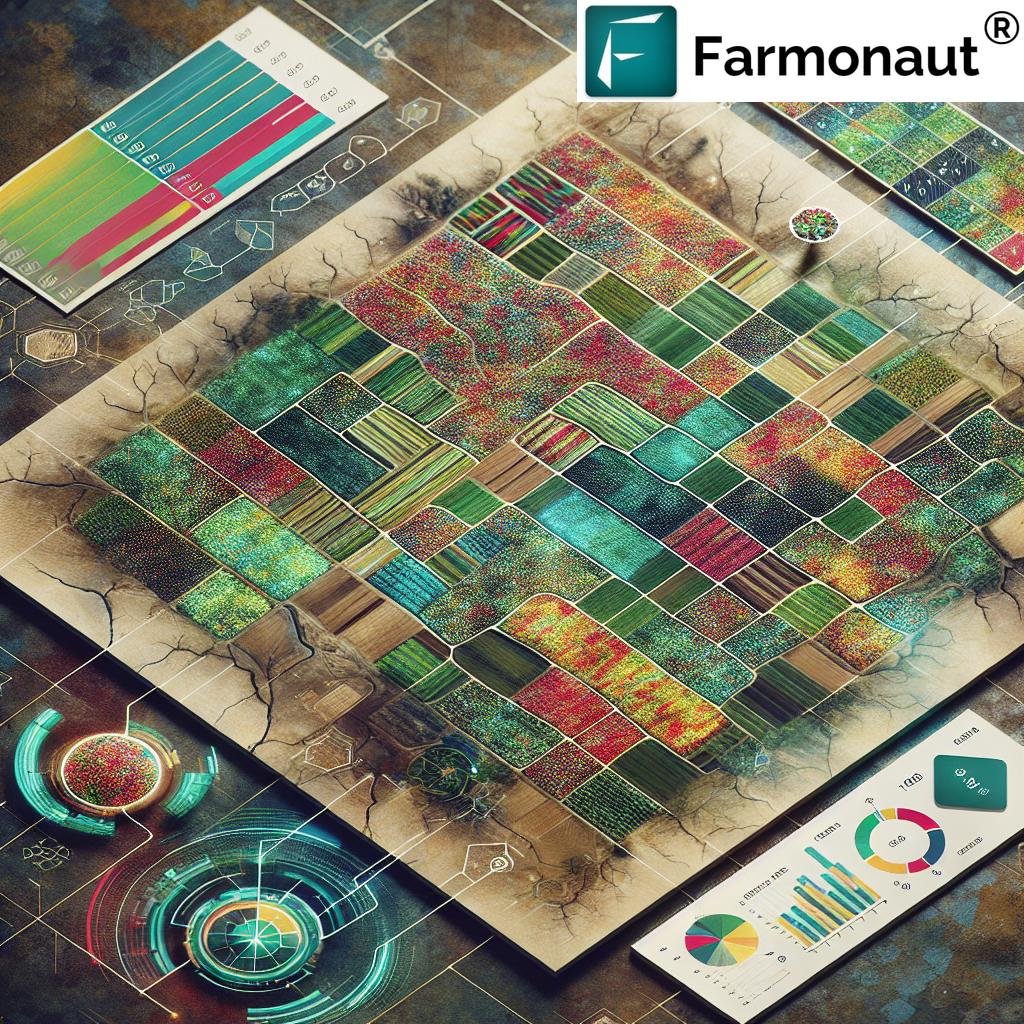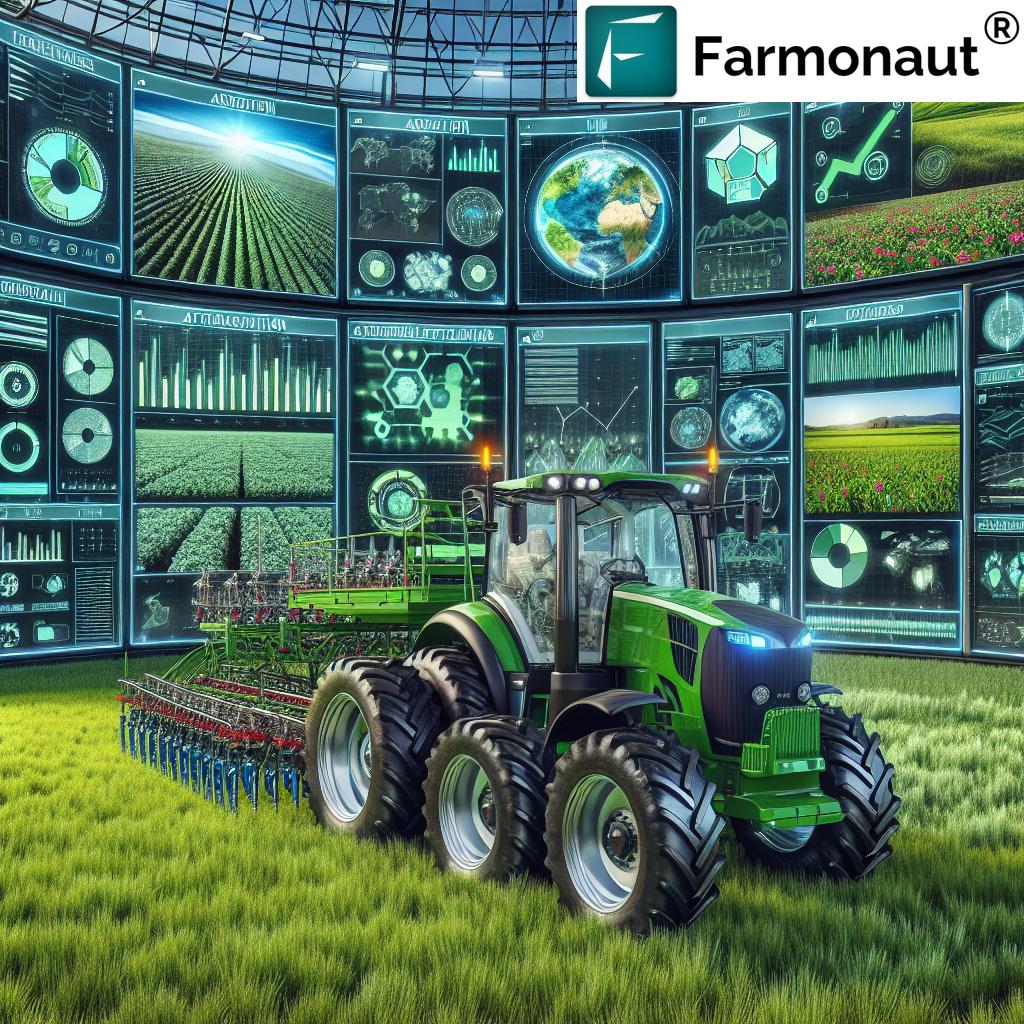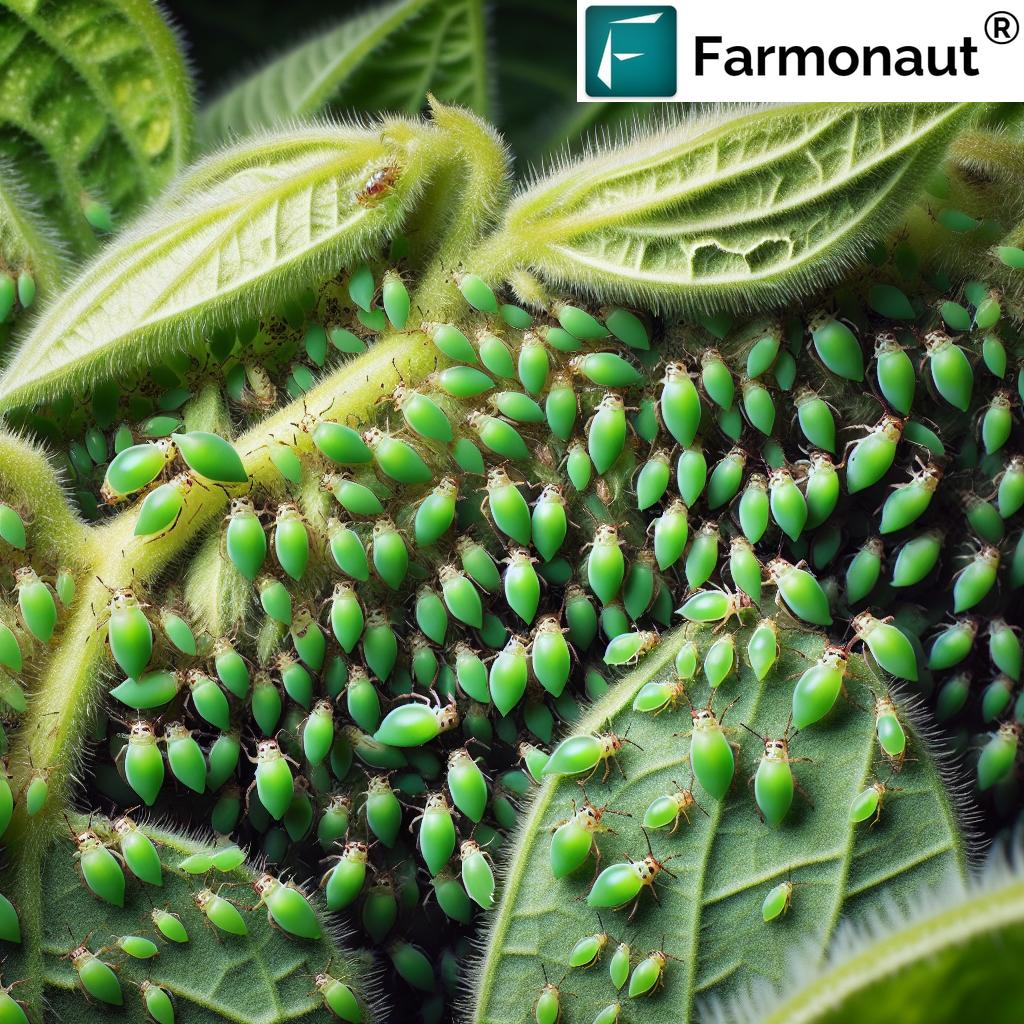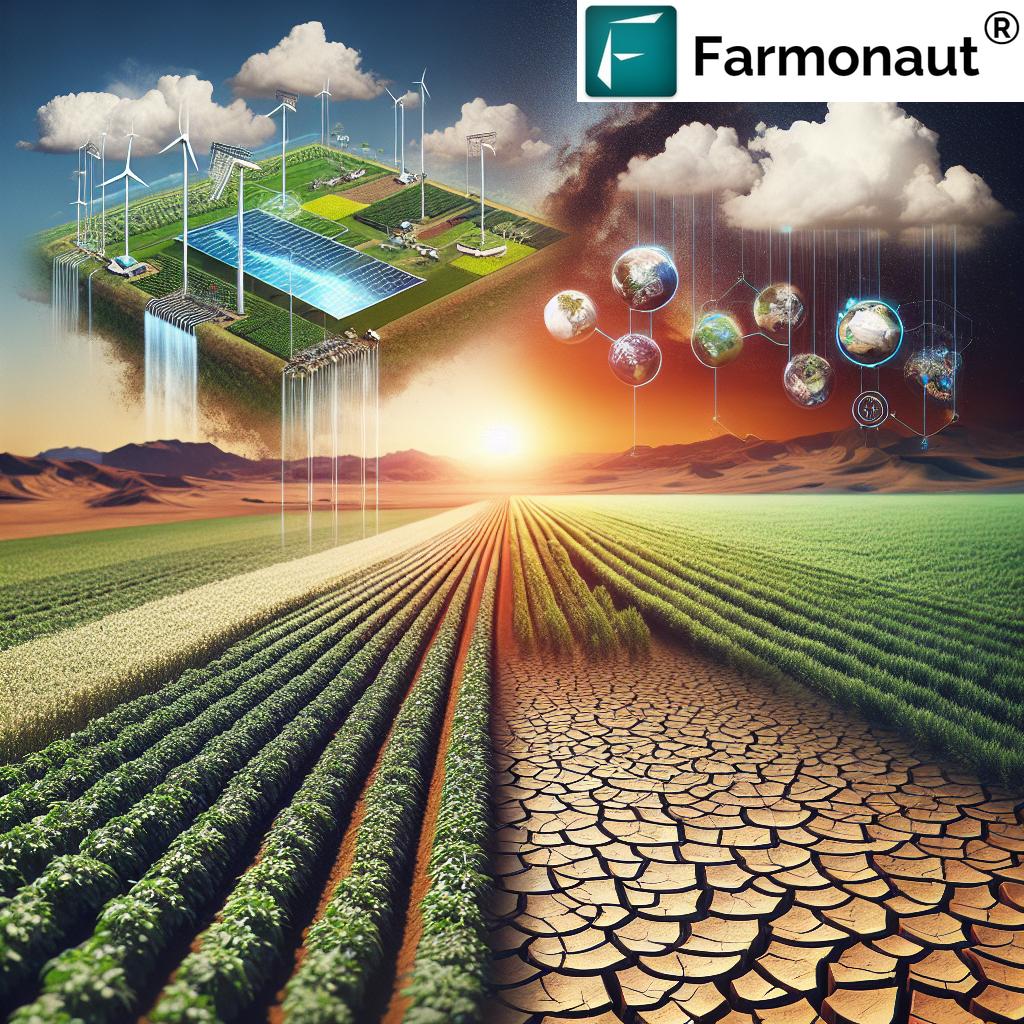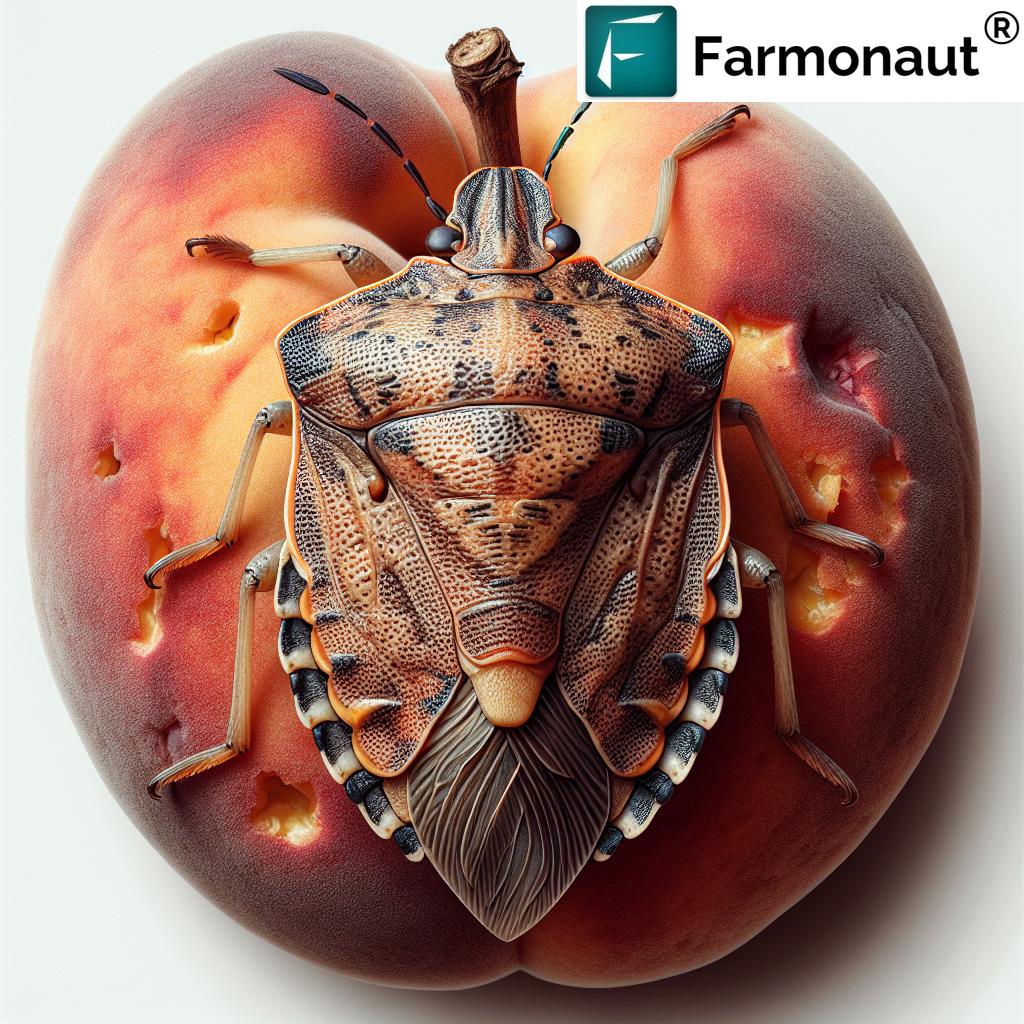What Is Precision Agriculture Technology? 7 Shocking Benefits
“Precision agriculture can increase crop yields by up to 20% using data-driven decision-making and advanced analytics.”
Precision agriculture is transforming the landscape of modern farming. We are witnessing a technological revolution in the agricultural sector, where advanced farm management systems, powerful data analytics, and innovative precision farming technologies are enabling us to optimize every aspect of crop cultivation and livestock management. From GPS-enabled tractors to real-time satellite monitoring, today’s agriculture leverages a suite of smart tools that provide unparalleled insight, control, and efficiency.
In this comprehensive guide, we explore the core of precision agriculture technology, examine the shocking benefits it brings to the table, and shed light on how cutting-edge solutions like Farmonaut make sustainable, data-driven farming accessible to producers across the globe. Our journey covers the latest innovations in remote sensing in farming, machine learning, IoT, and more. Join us as we unravel the mechanics, the advantages, and the future potential of this agricultural revolution.
Table of Contents
- What is Precision Agriculture?
- Core Technologies Behind Precision Agriculture
- 7 Shocking Benefits of Precision Agriculture
- Farmonaut’s Approach: Making Precision Agriculture Affordable
- Conventional vs. Precision Agriculture: Key Benefits Table
- Challenges and Considerations in Adopting Precision Farming Technologies
- The Future of Precision Agriculture
- Frequently Asked Questions
- Farmonaut Solutions and Pricing
What is Precision Agriculture?
At its essence, precision agriculture (also called precision farming) is the science and art of optimizing farming practices with the help of cutting-edge technology. By utilizing GPS, advanced sensors, machine learning, IoT, remote sensing, and precision application systems, we are able to monitor, analyze, and control every variable that influences crop growth and livestock productivity.
The fundamental goal is to maximize farm outputs while minimizing waste, resource consumption, and environmental impact. Unlike traditional blanket approaches, precision agriculture empowers us to treat every segment of the field, and even every plant or animal, according to its unique needs. This transformation means we make informed decisions rooted in real-time data and analytics, promoting sustainability and resilience in our farming operations.
- Precision farming is about managing specific conditions of crops, livestock, and resources—in other words, farming with accuracy.
- It leverages GIS mapping, IoT devices, satellite imagery, and advanced data analytics for tailored field management.
- We track and control variables such as soil moisture, nutrient levels, weather patterns, pest outbreaks, and animal health.
Farmonaut, for example, makes all this possible and affordable by delivering satellite-based crop health monitoring, AI-powered advisories, blockchain-based traceability, and automated resource management, all accessible via the web, Android, iOS, and API.
“Over 70% of farmers adopting precision technology report significant reductions in fertilizer and pesticide usage.”
Core Technologies Behind Precision Agriculture
Let’s unpack the key innovations powering this shift to precision and sustainability:
1. Global Positioning System (GPS) & Auto-Guidance Systems
GPS technology provides accurate field location data and enables auto-steer systems for tractors and machinery, reducing operational errors. With precise navigation, we can limit overlaps in planting, fertilizing, and harvesting, optimizing every pass in the field and conserving resources like fuel and time.
- Auto-guidance ensures that equipment follows optimal routes, even on large and irregularly shaped fields.
- By reducing overlap, we minimize waste and maximize input utilization.
- Farmonaut’s platform assists in fleet management, providing oversight on machinery operation, route optimization, and safety management, crucial for agribusinesses managing vast operations.
2. Variable Rate Technology (VRT) in Agriculture
Variable Rate Technology is a revolutionary method where input application—such as seeds, fertilizers, or pesticides—is adjusted precisely to the needs of different field zones. Using data gathered from sensors, satellite imagery, and analytics, we deploy resources only where and when needed most.
- Minimize fertilizer and pesticide waste.
- Enhance yields and quality by matching input levels to zones with optimal conditions for growth.
- Reduce operational costs and environmental impact.
With platforms like Farmonaut, these decisions are further optimized through real-time analytics and zone-wise satellite monitoring.
3. Remote Sensing in Farming: Drones and Satellite Imagery
Remote sensing involves monitoring fields from above using drones and satellites fitted with multispectral cameras. This approach allows us to detect crop stress, pest infestations, diseases, and nutrient deficiencies early, supporting timely interventions.
- Satellite imagery provides large-scale, consistent field data even in inaccessible areas.
- Drones deliver ultra-high resolution imagery for targeted scouting and assessment.
- Farmonaut specializes in satellite-based crop health monitoring, delivering NDVI, soil moisture, and thermal analysis to farmers via affordable digital tools and API access.
4. Data Analytics for Agriculture & Machine Learning Algorithms
The enormous amounts of data collected via sensors, satellites, and on-the-ground devices are transformed into actionable intelligence by advanced data analytics and machine learning. These systems:
- Identify patterns and trends that help us predict yield outcomes, pest outbreaks, and resource requirements.
- Provide informed, data-driven recommendations for planting, irrigation, fertilization, and harvesting.
- Farmonaut’s AI-based advisory—Jeevn AI—delivers real-time, personalized insights, weather forecasts, and crop management strategies to ensure optimal crop health and productivity.
5. Internet of Things in Agriculture (IoT) and Smart Farming Solutions
IoT seamlessly connects sensors, actuators, and devices across the farm to collect and exchange data. This smart system enables:
- Real-time tracking of weather, soil moisture, crop growth, and machinery performance.
- Remote automation of irrigation, fertilization, and other critical operations.
- Automated maintenance alerts and resource monitoring for performance efficiency.
- Farmonaut utilizes IoT to empower farmers with instant access to all key farm data from a single user-friendly dashboard.
6. Precision Irrigation Systems
Water scarcity is a top challenge in agriculture. Precision irrigation systems use soil moisture sensors, weather data, and automated controllers to deliver water exactly where and when it is needed.
- This approach saves water, prevents over- or under-watering, and leads to healthier crops.
- Farmonaut’s solution cross-references satellite-based soil moisture data to guide efficient irrigation scheduling, directly supporting conservation and higher yields.
7. Automated Mechanical Weeders
Automated weeders powered by machine learning use sensors and algorithms to identify and remove weeds selectively, eliminating the need for widespread chemical herbicide applications. These tools:
- Distinguish between crops and weeds with high accuracy.
- Reduce manual labor and expenses, while minimizing chemical impact on the environment.
8. Precision Livestock Farming (PLF)
PLF extends precision techniques to livestock management by monitoring animal health, growth, and welfare in real-time through wearable and environmental sensors, cameras, and microphones.
- Detects early signs of illness, stress, or suboptimal conditions.
- Enables tailored feeding, breeding, and health strategies for each animal or group.
- Helps farmers adhere to the highest standards of animal welfare and productivity.
7 Shocking Benefits of Precision Agriculture
Why are more and more farmers around the world shifting to precision farming technologies? Here are the “shocking” and transformative advantages that set the new standard for sustainable, data-driven farming:
-
Dramatically Enhanced Efficiency and Productivity
Whether it’s variable rate application of fertilizer or GPS-guided planting, we maximize each acre’s potential.
Yield increases are frequently between 10–20% compared to conventional farming methods, thanks to optimized planting density, reduced overlap, and targeted interventions. We get more from less—every season. -
Input Cost Reduction and Resource Conservation
By providing the right input at the right time and place, we cut down on seed, chemical, and water usage. Variable rate technology in agriculture ensures that nothing is wasted, lowering costs while minimizing excess applications of fertilizers and pesticides.
-
Unparalleled Water Usage Efficiency
Precision irrigation systems and real-time moisture tracking help us give crops exactly the water they need, slashing waste and securing yields even in drought-prone areas. Farms using these systems typically reduce water consumption by 20–50%.
-
Reduced Pesticide and Fertilizer Application
With sensor-driven diagnostics and remote sensing in farming, we reduce chemical usage by up to 40% in many cases. This both saves costs and dramatically reduces our farming’s environmental footprint—keeping soil and water cleaner and safer.
-
Superior Operational Efficiency
Automated equipment, real-time fleet management, and AI-driven scheduling reduce manual labor, fuel expenditure, and time in the field. With platforms like Farmonaut, large-scale farm management becomes easier, coordinated, and more efficient.
-
Data-Driven Decision Making
Farming is no longer a guessing game. We rely on data analytics for agriculture: historical patterns, weather forecasts, live imagery, and predictive algorithms to make informed, adaptive, and risk-mitigated decisions—from planting dates to resource allocation.
-
Environmental Sustainability and Traceability
Precision agriculture minimizes runoff, emissions, and ecological impact by reducing synthetic inputs and optimizing water and energy use. Farmonaut’s carbon footprinting and blockchain-based traceability let farmers and agribusinesses monitor, verify, and prove their sustainability credentials—building trust throughout the food supply chain.
“Over 70% of farmers adopting precision technology report significant reductions in fertilizer and pesticide usage.”
Farmonaut’s Approach: Making Precision Agriculture Affordable & Accessible
High costs have long been a barrier to the adoption of advanced precision farming technologies—until now. Farmonaut delivers a holistic platform built to break these barriers for farmers of all scales, worldwide.
-
Satellite-Based Crop Health Monitoring: With NDVI, soil moisture, pest, and weather alerts delivered via phone, tablet, or web, every farmer can now monitor fields in real-time and make precise, timely interventions.
Explore satellite-based monitoring & advisory on all devices & browsers. - Personalized AI Advisories (Jeevn AI): Get custom management tips, weather risks, and optimal input scheduling for your unique crops and field conditions.
- Blockchain Traceability & Sustainability: Prove origin, journey, and sustainable practices to global buyers with product traceability. Track and minimize your carbon footprint for eco-friendly farming certifications.
- Resource & Fleet Management: Manage all your vehicles, equipment, and workforce efficiently with fleet management tools, reducing downtime and fuel use.
- Access to Crop Loans & Insurance: Use satellite-verified reports to qualify for agriculture loans and agri-insurance. All data is verifiable, reducing fraud and enabling better risk management.
Farmonaut’s subscription-based pricing (monthly or annual, based on hectares and data frequency) ensures transparency and flexibility—available for individual farmers, agribusinesses, government agencies, and researchers. Developers and enterprises can also directly integrate our satellite imagery and analytics into their custom farm management tools via API.
Comparison Table: Conventional vs. Precision Agriculture
| Benefit | Conventional Agriculture (Est. Value) | Precision Agriculture (Est. Value) | Remarks/Impact |
|---|---|---|---|
| Yield Increase | Baseline (0–5%) annual increase | 10–20% higher yields | Yield growth due to site-specific optimization |
| Input Cost Reduction | No targeting, 0–5% savings | 10–30% cost reduction | Lower seed, fertilizer, and pesticide use |
| Water Usage Efficiency | Up to 40% water lost to inefficiency | 20–50% reduction in water use | Sensor-driven irrigation and real-time scheduling |
| Pesticide/Fertilizer Savings | Uniform application, often 0% savings | Up to 40% saving, site-specific | Reduces chemical runoff and environmental risk |
| Operational Efficiency | Manual, labor and fuel intensive | 30–60% more efficient | Automation, GPS, and smart fleet management |
| Data-Driven Decisions | Based on experience & guesswork | Real-time analytics, actionable insights | Reduces risks and improves outcomes |
| Sustainability | High input waste, environmental risk | Resource conservation, traceability, low emissions | Addresses regulations and consumer demands |
Challenges and Considerations in Adopting Precision Agriculture Technologies
While the benefits of precision agriculture are immense, certain hurdles remain on the path to universal adoption:
- High Initial Investment: Advanced sensors, GPS machinery, and cloud platforms can involve substantial upfront costs—though affordable SaaS options like Farmonaut are narrowing this gap for small and medium-sized farmers.
- Technical Complexity: Integrating multiple systems (satellite, IoT, analytics) may require specialized training and ongoing support.
- Data Ownership & Privacy: As we collect immense volumes of field, crop, and livestock data, issues around “who owns the data,” privacy, and third-party access have become critical.
- Internet Connectivity: Many precision farming technologies rely on high-speed internet. Remote or underserved rural areas may face access challenges.
- Change Management: Shifting from traditional practices to technology-driven systems requires change at both operational and cultural levels for farmers and agribusinesses.
Farmonaut addresses these challenges by offering cost-effective, modular, and user-friendly tools that can easily scale with your operational needs, regardless of farm size or technical proficiency.
The Future of Precision Agriculture
The future is bright—and digital. Trends like autonomous tractors and drones, 5G-enabled farm devices, blockchain for food traceability, AI-powered advisory, and predictive analytics are further pushing the boundaries. As global food demand increases, and as we face the challenges of climate change, the adoption of advanced farm management systems will be essential to achieving food security and agricultural resilience.
- Expect smarter, more affordable, and even more precise algorithms for yield forecasting, pest prediction, and disease diagnostics.
- IoT devices will become ubiquitous—enabling continual feedback, improved automation, and new forms of farm-to-market traceability.
- Sustainability will remain central: Carbon footprinting and certification tools will help farmers (and their customers) verify and promote responsible agricultural practices.
- Whole regions and governments will tap into satellite-based farm oversight, crop insurance verification, and smart subsidy distribution using platforms like Farmonaut.
- Supply chain transparency—powered by traceability solutions—will protect consumers and boost the market value of sustainably grown produce.
Farmonaut continues to lead these innovations, providing the backbone for affordable, scalable, and practical agricultural digital transformation for everyone—from the individual smallholder to large multinational agribusinesses and government institutions.
Frequently Asked Questions: Precision Agriculture
What is precision agriculture?
Precision agriculture refers to the use of advanced technologies (GPS, sensors, analytics, drones, IoT) to monitor, control, and optimize the use of farm resources. This results in higher yields, lower costs, reduced wastage, and improved sustainability.
How do precision farming technologies differ from conventional methods?
Conventional methods treat all parts of a field or farm similarly. Precision farming uses real-time data to tailor input application (like water, fertilizer, and crop protection) to the specific needs of each part of the field or even individual plants or animals, maximizing efficiency and minimizing waste.
How does remote sensing in farming contribute to better outcomes?
Remote sensing uses drones and satellite imagery to detect crop health, stress conditions, pests, and disease early on, ensuring timely interventions. Farmonaut provides such satellite-based monitoring, making these tools affordable and accessible globally.
What are the most significant benefits of precision agriculture?
Enhanced yield, cost savings on inputs, conservation of water and fertilizers, improved environmental sustainability, data-driven management, operational efficiency, and full traceability of agricultural products.
Is adoption of precision agriculture technologies expensive?
While some systems require initial investment, platforms like Farmonaut offer affordable, modular, and subscription-based services, drastically reducing the entry barrier for small and medium-scale farmers.
How can I get started with these advanced farm management systems?
Begin by exploring accessible, data-driven platforms such as Farmonaut. With web, Android, and iOS access, and APIs for advanced integration, scaling up is simple regardless of farm size or technical expertise.
Farmonaut Solutions & Pricing
Explore flexible subscriptions for satellite-based crop monitoring, personalized AI advice, traceability, sustainability reports, and more—adapted to everyone from small farmers to large enterprise operations:
Want to build your own solution? Use Farmonaut’s API and API documentation for developers to integrate satellite, weather, and crop analytics with your management tools.
Get started with the Farmonaut App here and join the global transformation towards efficient, sustainable, and profitable agriculture.
Summary: The Revolution of Precision Agriculture
To sum up, precision agriculture represents a paradigm shift for the global farming community. With the integration of advanced technologies, satellite-based monitoring, and data-driven analytics, we are ushering in a new era of resource-efficient and sustainable agriculture. Platforms like Farmonaut are driving this transformation, making precision agriculture affordable, scalable, and accessible for everyone—from local farmers to large-scale agribusinesses and public agencies.
By leveraging remote sensing in farming, variable rate technology, IoT, AI, and blockchain, we now have the ability to optimize every application, livestock practice, and product supply chain. The results are tangible: higher yields, lower costs, reduced waste, improved sustainability, and greater resilience in the face of global agricultural challenges.
Embrace the future with precision agriculture—where every acre is optimized, every resource is accounted for, and every harvest is maximized sustainably for generations to come.


